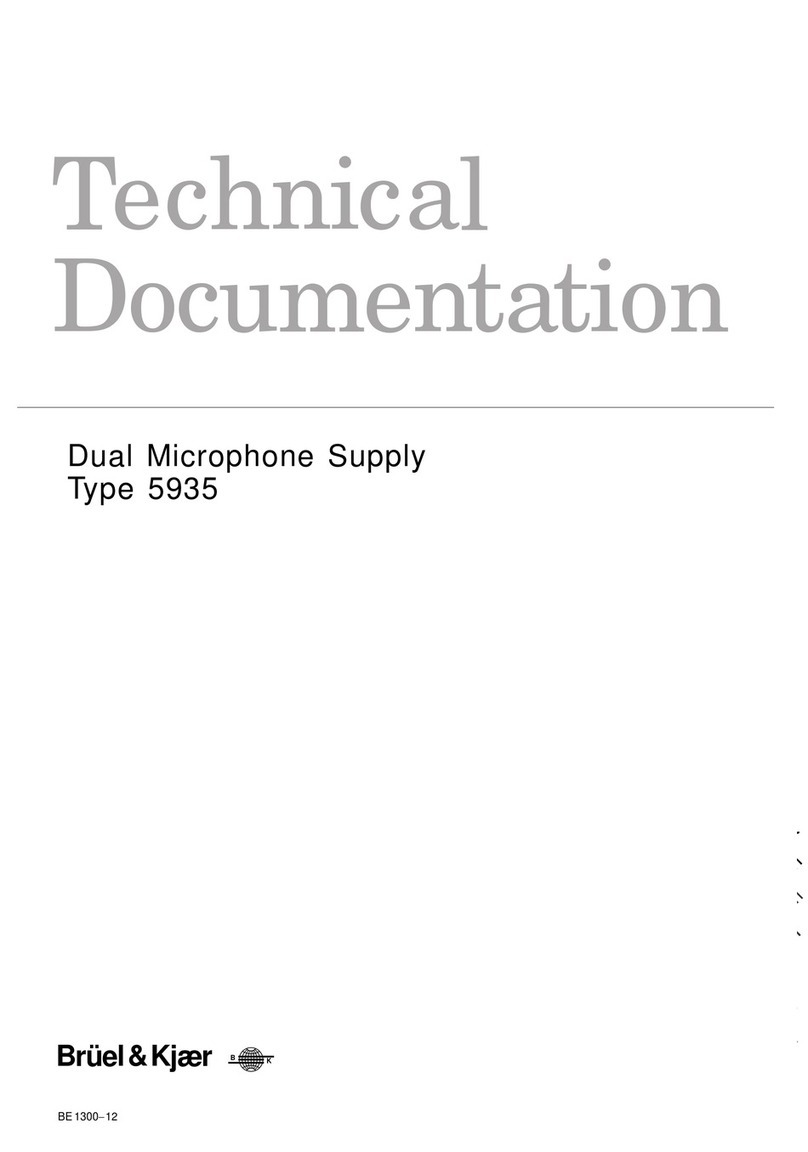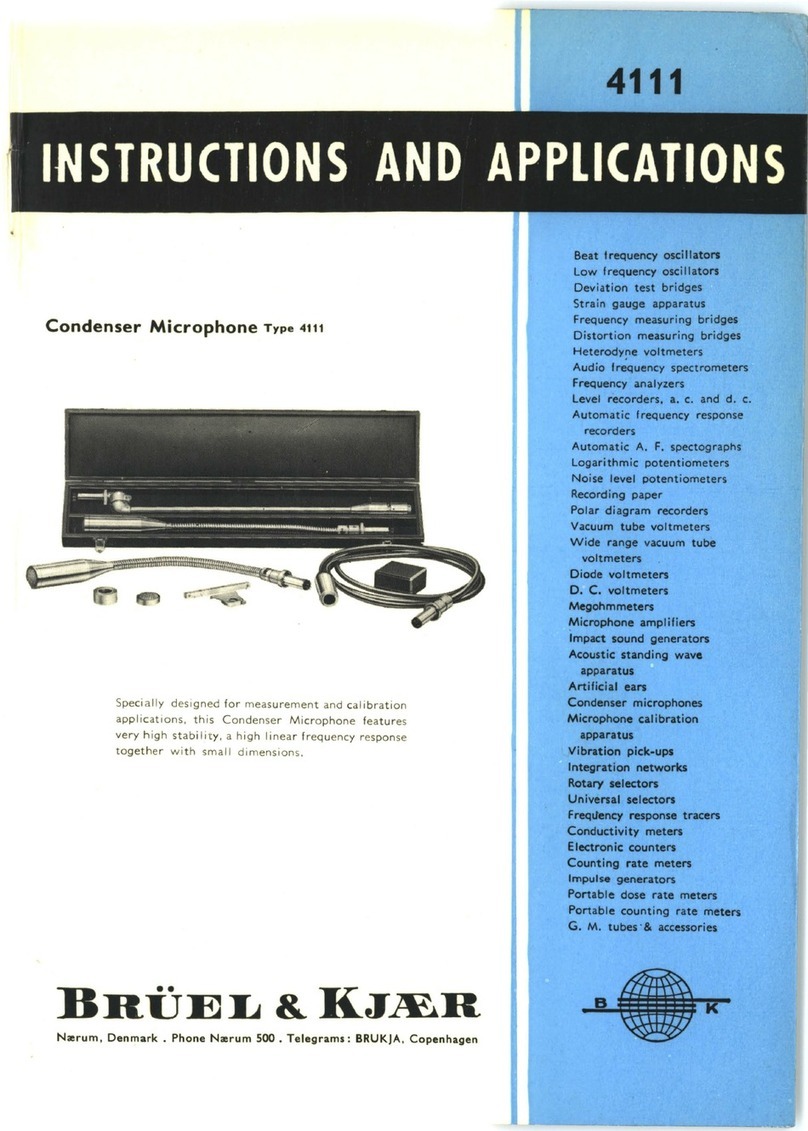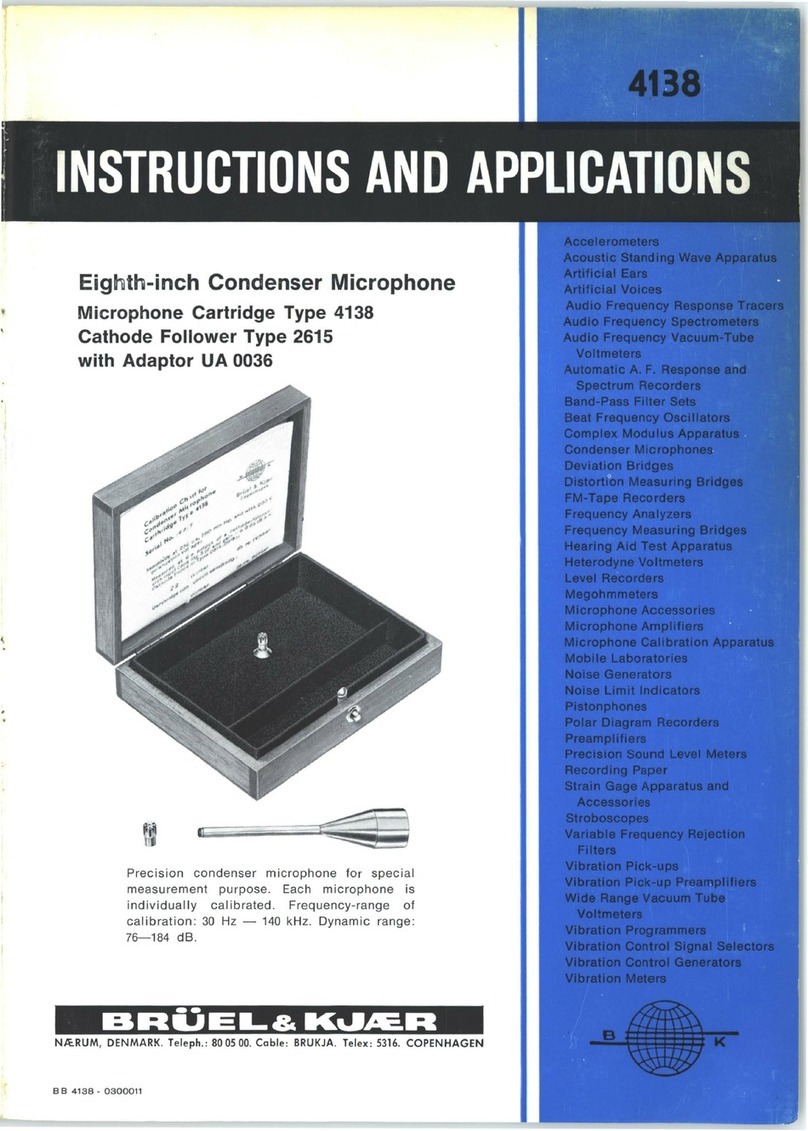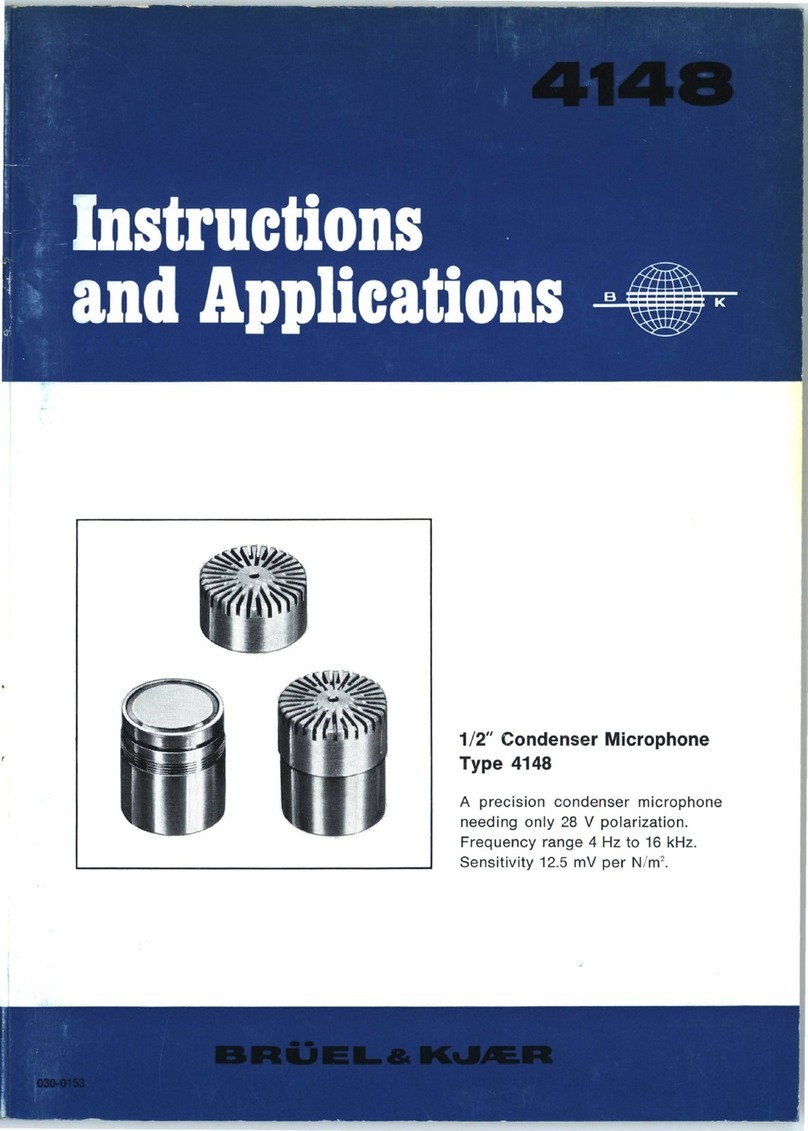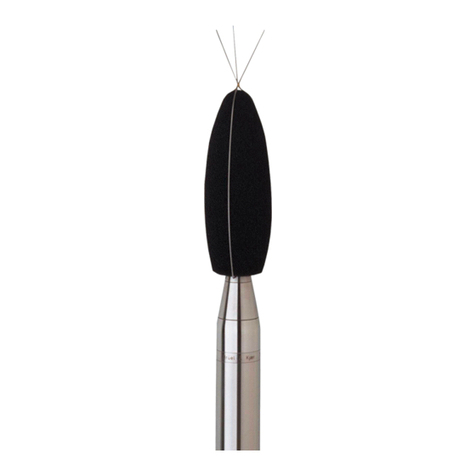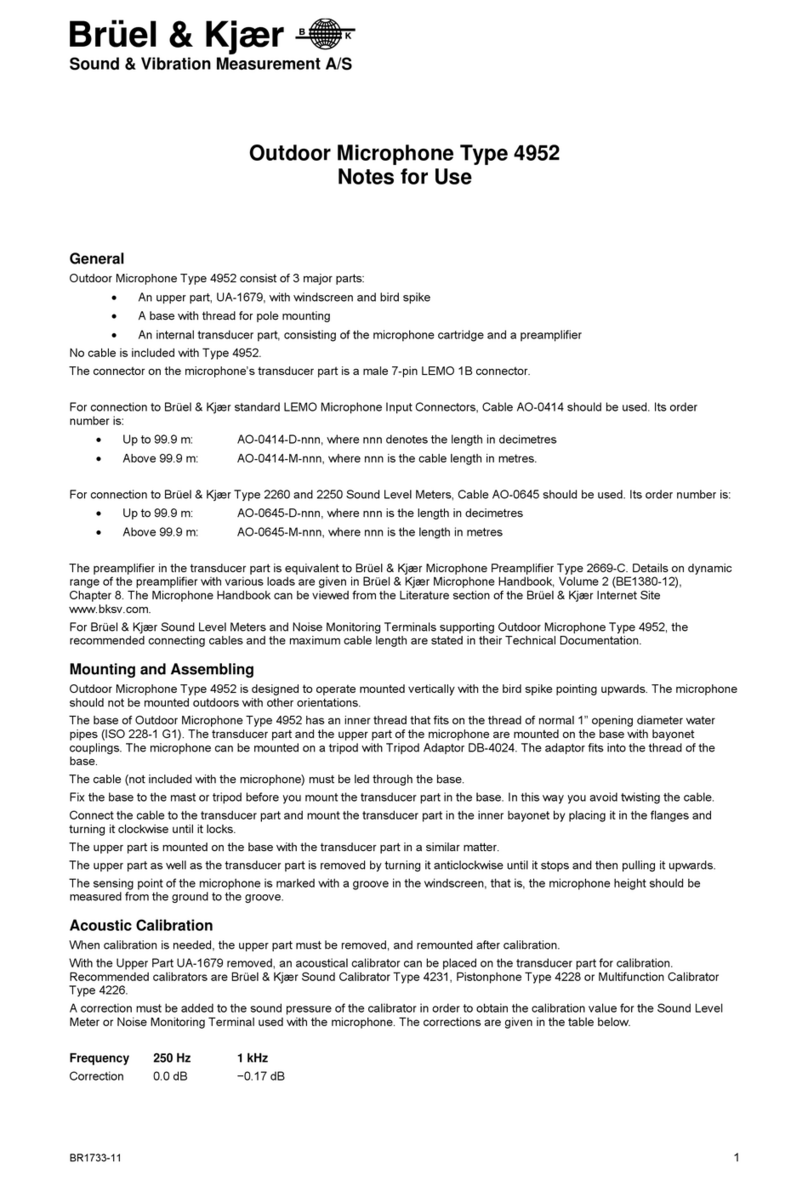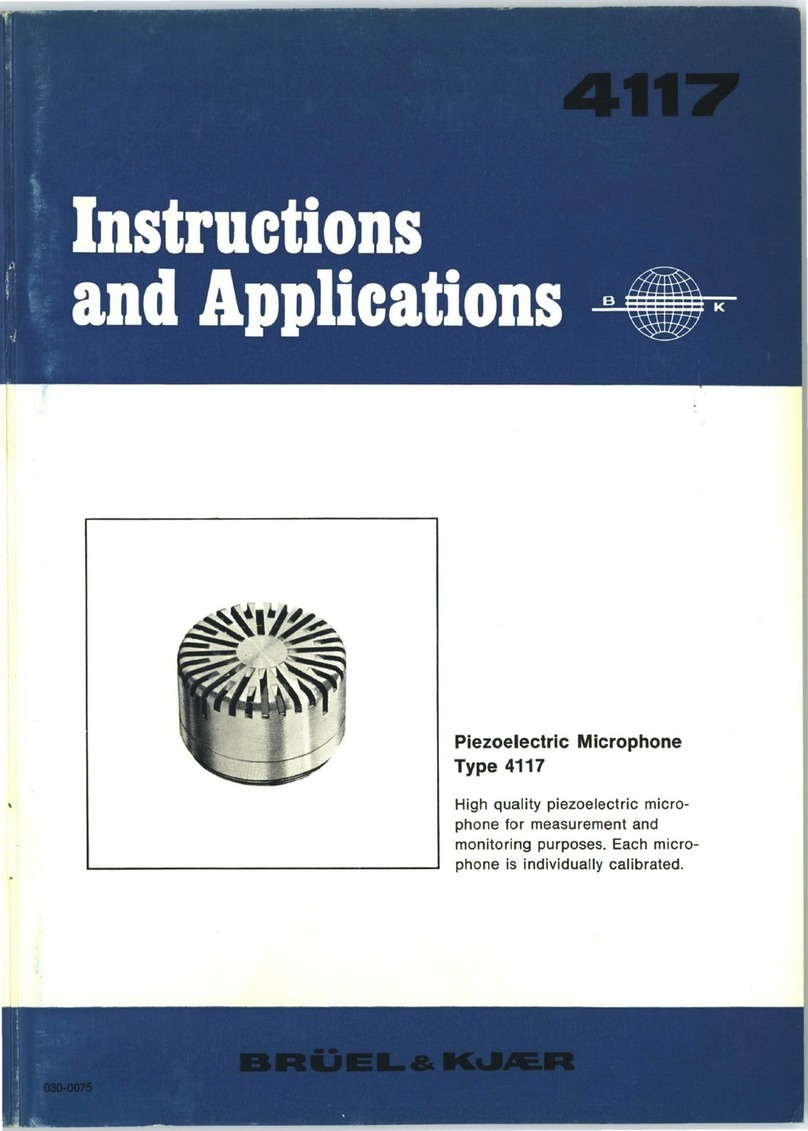
Falcon™ Range of Microphone Products
Microphone Handbook Brüel & Kjær
0−4
Contents
3.11 Effect of Temperature............................................................................................... 3–22
3.12 Effect of Ambient Pressure....................................................................................... 3–25
3.13 Effect of Humidity..................................................................................................... 3–26
3.14 Effect of Vibration..................................................................................................... 3–27
3.15 Effect of Magnetic Field............................................................................................ 3–27
3.16 Electromagnetic Compatibility................................................................................. 3–27
3.17 Specifications Overview............................................................................................ 3–28
3.18 Ordering Information................................................................................................ 3–28
4. Free-field 1/2" Microphone Type 4190......................................................... 4–1
4.1 Introduction................................................................................................................. 4–2
4.2 Sensitivity.................................................................................................................... 4–5
4.3 Frequency Response.................................................................................................... 4–6
4.4 Directional Characteristics....................................................................................... 4–13
4.5 Dynamic Range ......................................................................................................... 4–14
4.6 Equivalent Volume and Calibrator Load Volume ................................................... 4–17
4.7 Capacitance ............................................................................................................... 4–19
4.8 Polarization Voltage.................................................................................................. 4–19
4.9 Leakage Resistance................................................................................................... 4–21
4.10 Stability ..................................................................................................................... 4–21
4.11 Effect of Temperature............................................................................................... 4–22
4.12 Effect of Ambient Pressure....................................................................................... 4–25
4.13 Effect of Humidity..................................................................................................... 4–27
4.14 Effect of Vibration..................................................................................................... 4–27
4.15 Effect of a Magnetic Field......................................................................................... 4–27
4.16 Electromagnetic Compatibility................................................................................. 4–28
4.17 Specifications Overview............................................................................................ 4–28
4.18 Ordering Information................................................................................................ 4–28
5. Free-field 1/2" Microphone Type 4191......................................................... 5–1
5.1 Introduction................................................................................................................. 5–2
5.2 Sensitivity.................................................................................................................... 5–5
5.3 Frequency Response.................................................................................................... 5–6
5.4 Directional Characteristics....................................................................................... 5–13
5.5 Dynamic Range ......................................................................................................... 5–14
5.6 Equivalent Volume and Calibrator Load Volume ................................................... 5–17
5.7 Capacitance ............................................................................................................... 5–19
5.8 Polarization Voltage.................................................................................................. 5–19
5.9 Leakage Resistance................................................................................................... 5–21
5.10 Stability ..................................................................................................................... 5–21
5.11 Effect of Temperature............................................................................................... 5–22
5.12 Effect of Ambient Pressure....................................................................................... 5–25
5.13 Effect of Humidity..................................................................................................... 5–27
5.14 Effect of Vibration..................................................................................................... 5–27
5.15 Effect of Magnetic Field............................................................................................ 5–27
